Xiaoguang Zhao
A Reactive Framework for Whole-Body Motion Planning of Mobile Manipulators Combining Reinforcement Learning and SDF-Constrained Quadratic Programmi
Mar 31, 2025Abstract:As an important branch of embodied artificial intelligence, mobile manipulators are increasingly applied in intelligent services, but their redundant degrees of freedom also limit efficient motion planning in cluttered environments. To address this issue, this paper proposes a hybrid learning and optimization framework for reactive whole-body motion planning of mobile manipulators. We develop the Bayesian distributional soft actor-critic (Bayes-DSAC) algorithm to improve the quality of value estimation and the convergence performance of the learning. Additionally, we introduce a quadratic programming method constrained by the signed distance field to enhance the safety of the obstacle avoidance motion. We conduct experiments and make comparison with standard benchmark. The experimental results verify that our proposed framework significantly improves the efficiency of reactive whole-body motion planning, reduces the planning time, and improves the success rate of motion planning. Additionally, the proposed reinforcement learning method ensures a rapid learning process in the whole-body planning task. The novel framework allows mobile manipulators to adapt to complex environments more safely and efficiently.
PolarBEVDet: Exploring Polar Representation for Multi-View 3D Object Detection in Bird's-Eye-View
Aug 29, 2024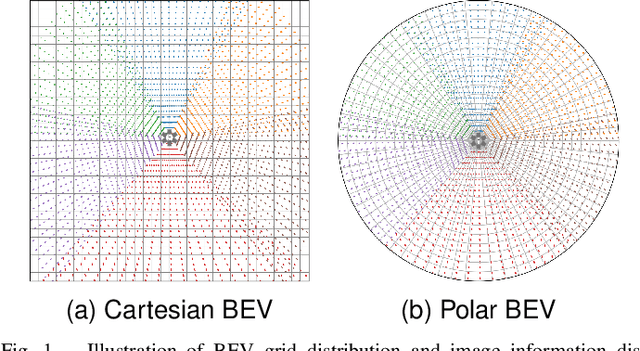
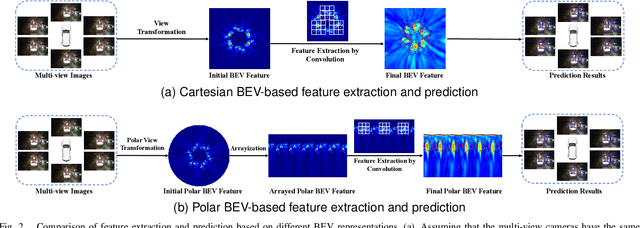
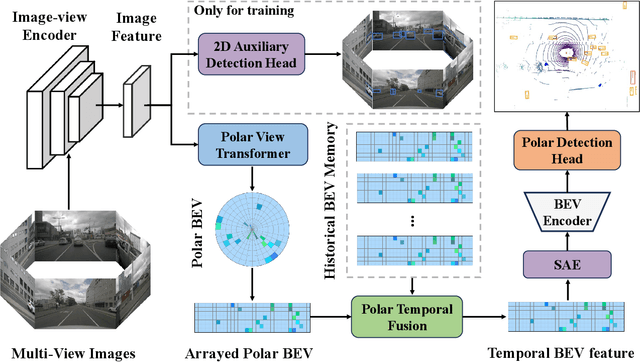
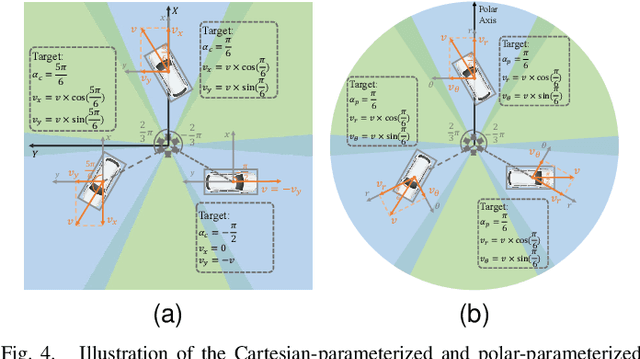
Abstract:Recently, LSS-based multi-view 3D object detection provides an economical and deployment-friendly solution for autonomous driving. However, all the existing LSS-based methods transform multi-view image features into a Cartesian Bird's-Eye-View(BEV) representation, which does not take into account the non-uniform image information distribution and hardly exploits the view symmetry. In this paper, in order to adapt the image information distribution and preserve the view symmetry by regular convolution, we propose to employ the polar BEV representation to substitute the Cartesian BEV representation. To achieve this, we elaborately tailor three modules: a polar view transformer to generate the polar BEV representation, a polar temporal fusion module for fusing historical polar BEV features and a polar detection head to predict the polar-parameterized representation of the object. In addition, we design a 2D auxiliary detection head and a spatial attention enhancement module to improve the quality of feature extraction in perspective view and BEV, respectively. Finally, we integrate the above improvements into a novel multi-view 3D object detector, PolarBEVDet. Experiments on nuScenes show that PolarBEVDet achieves the superior performance. The code is available at https://github.com/Yzichen/PolarBEVDet.git.
Soar: Design and Deployment of A Smart Roadside Infrastructure System for Autonomous Driving
Apr 21, 2024
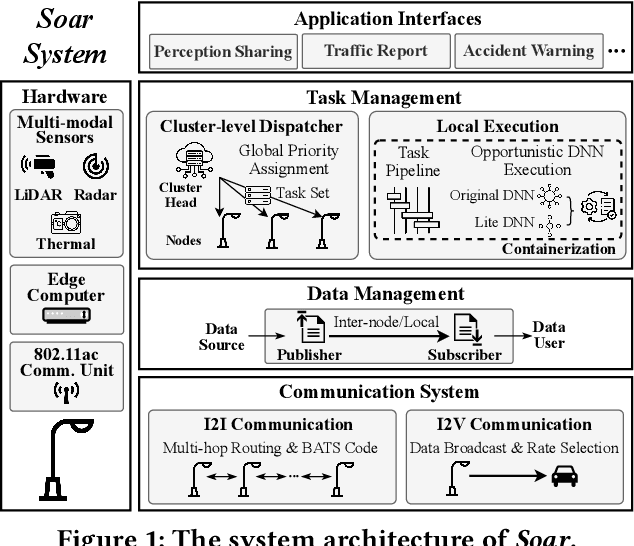
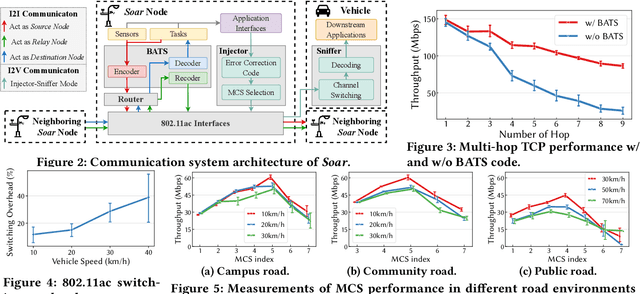
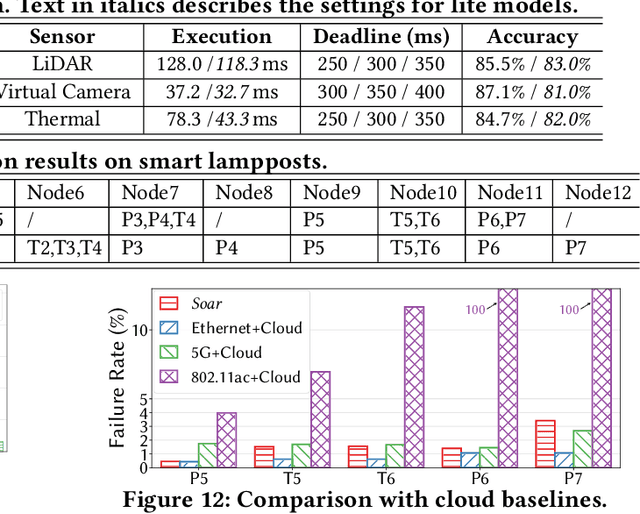
Abstract:Recently,smart roadside infrastructure (SRI) has demonstrated the potential of achieving fully autonomous driving systems. To explore the potential of infrastructure-assisted autonomous driving, this paper presents the design and deployment of Soar, the first end-to-end SRI system specifically designed to support autonomous driving systems. Soar consists of both software and hardware components carefully designed to overcome various system and physical challenges. Soar can leverage the existing operational infrastructure like street lampposts for a lower barrier of adoption. Soar adopts a new communication architecture that comprises a bi-directional multi-hop I2I network and a downlink I2V broadcast service, which are designed based on off-the-shelf 802.11ac interfaces in an integrated manner. Soar also features a hierarchical DL task management framework to achieve desirable load balancing among nodes and enable them to collaborate efficiently to run multiple data-intensive autonomous driving applications. We deployed a total of 18 Soar nodes on existing lampposts on campus, which have been operational for over two years. Our real-world evaluation shows that Soar can support a diverse set of autonomous driving applications and achieve desirable real-time performance and high communication reliability. Our findings and experiences in this work offer key insights into the development and deployment of next-generation smart roadside infrastructure and autonomous driving systems.
Conformal Metamaterials with Active Tunability and Self-adaptivity for Magnetic Resonance Imaging
Sep 29, 2023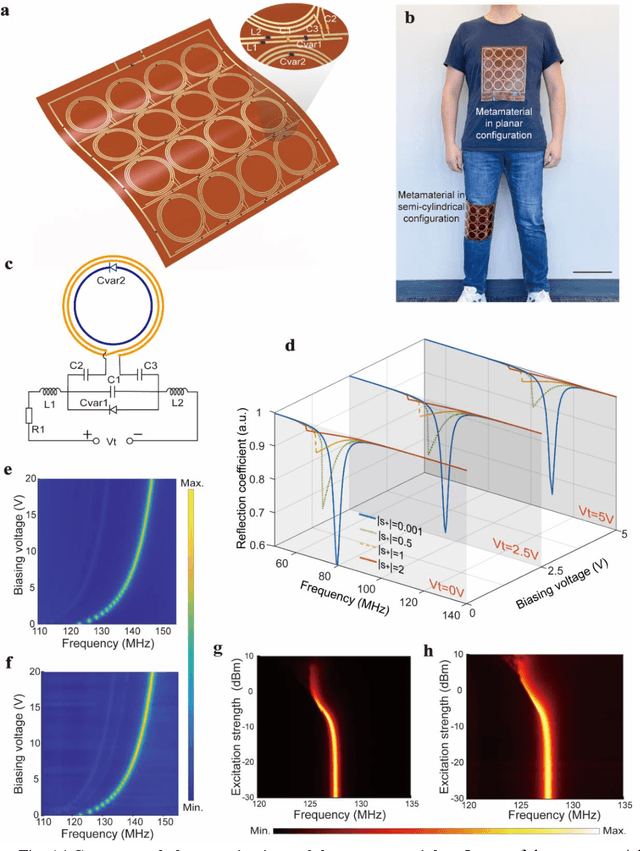
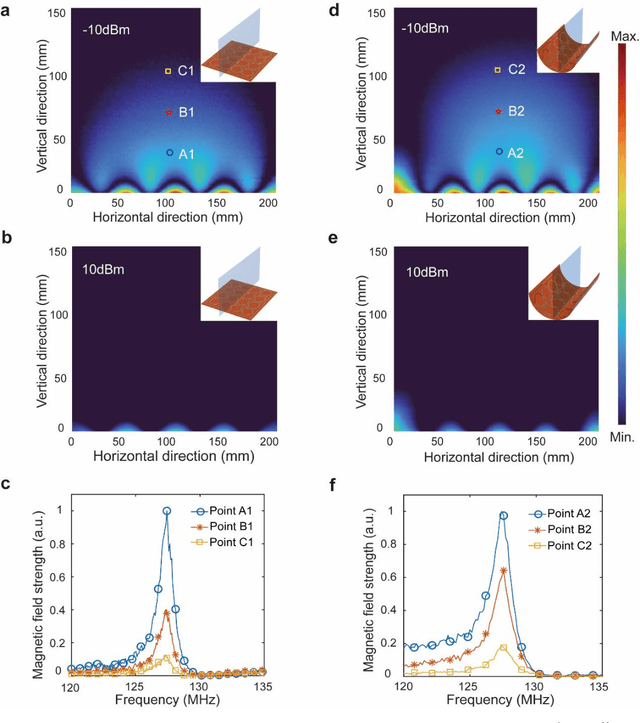
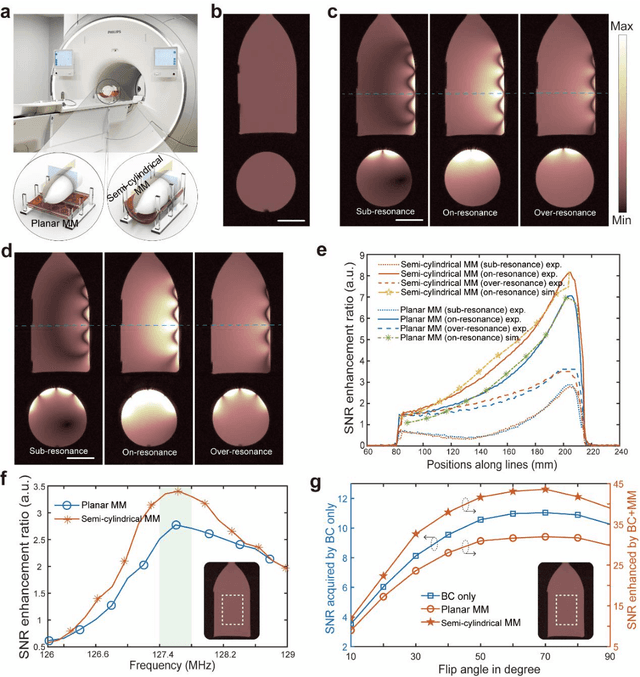

Abstract:Ongoing effort has been devoted to applying metamaterials to boost the imaging performance of magnetic resonance imaging owing to their unique capacity for electromagnetic field confinement and enhancement. However, there are still major obstacles to widespread clinical adoption of conventional metamaterials due to several notable restrictions, namely: their typically bulky and rigid structures, deviations in their optimal resonance frequency, and their inevitable interference with the transmission RF field in MRI. Herein, we address these restrictions and report a conformal, smart metamaterial, which may not only be readily tuned to achieve the desired, precise frequency match with MRI by a controlling circuit, but is also capable of selectively amplifying the magnetic field during the RF reception phase by sensing the excitation signal strength passively, thereby remaining off during the RF transmission phase and thereby ensuring its optimal performance when applied to MRI as an additive technology. By addressing a host of current technological challenges, the metamaterial presented herein paves the way toward the wide-ranging utilization of metamaterials in clinical MRI, thereby translating this promising technology to the MRI bedside.
DALNet: A Rail Detection Network Based on Dynamic Anchor Line
Aug 24, 2023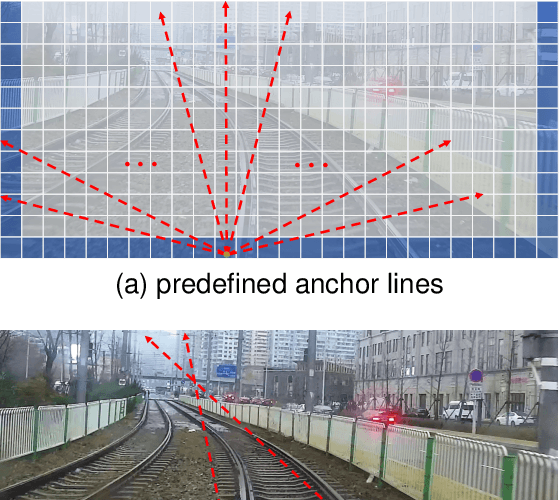
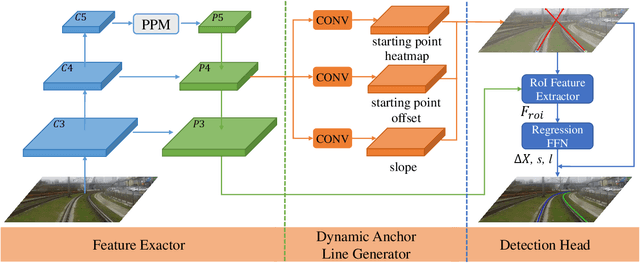
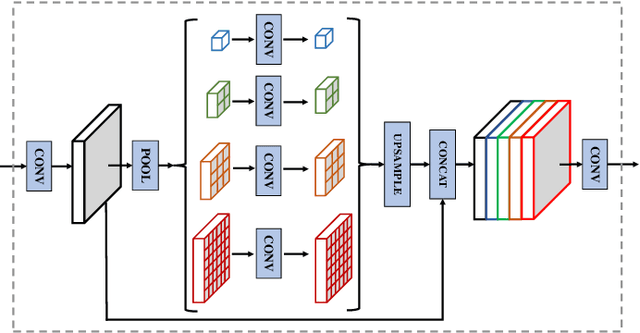
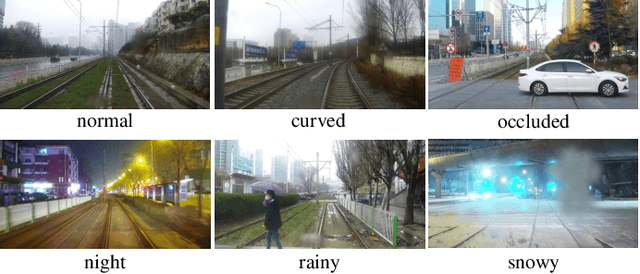
Abstract:Rail detection is one of the key factors for intelligent train. In the paper, motivated by the anchor line-based lane detection methods, we propose a rail detection network called DALNet based on dynamic anchor line. Aiming to solve the problem that the predefined anchor line is image agnostic, we design a novel dynamic anchor line mechanism. It utilizes a dynamic anchor line generator to dynamically generate an appropriate anchor line for each rail instance based on the position and shape of the rails in the input image. These dynamically generated anchor lines can be considered as better position references to accurately localize the rails than the predefined anchor lines. In addition, we present a challenging urban rail detection dataset DL-Rail with high-quality annotations and scenario diversity. DL-Rail contains 7000 pairs of images and annotations along with scene tags, and it is expected to encourage the development of rail detection. We extensively compare DALNet with many competitive lane methods. The results show that our DALNet achieves state-of-the-art performance on our DL-Rail rail detection dataset and the popular Tusimple and LLAMAS lane detection benchmarks. The code will be released at https://github.com/Yzichen/mmLaneDet.
TB-Net: A Three-Stream Boundary-Aware Network for Fine-Grained Pavement Disease Segmentation
Nov 07, 2020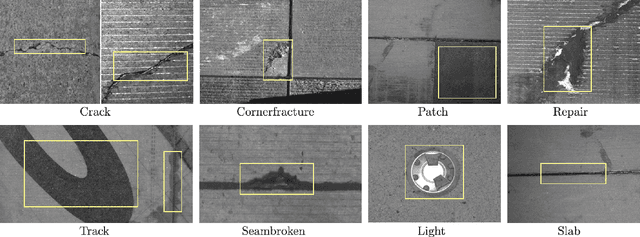

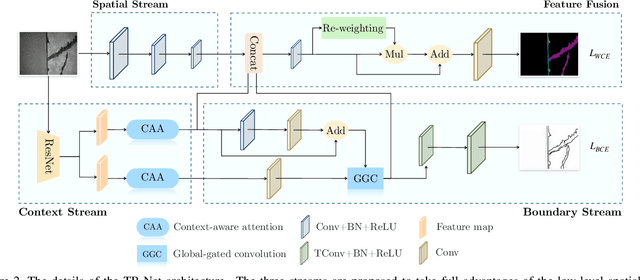

Abstract:Regular pavement inspection plays a significant role in road maintenance for safety assurance. Existing methods mainly address the tasks of crack detection and segmentation that are only tailored for long-thin crack disease. However, there are many other types of diseases with a wider variety of sizes and patterns that are also essential to segment in practice, bringing more challenges towards fine-grained pavement inspection. In this paper, our goal is not only to automatically segment cracks, but also to segment other complex pavement diseases as well as typical landmarks (markings, runway lights, etc.) and commonly seen water/oil stains in a single model. To this end, we propose a three-stream boundary-aware network (TB-Net). It consists of three streams fusing the low-level spatial and the high-level contextual representations as well as the detailed boundary information. Specifically, the spatial stream captures rich spatial features. The context stream, where an attention mechanism is utilized, models the contextual relationships over local features. The boundary stream learns detailed boundaries using a global-gated convolution to further refine the segmentation outputs. The network is trained using a dual-task loss in an end-to-end manner, and experiments on a newly collected fine-grained pavement disease dataset show the effectiveness of our TB-Net.
A Generalized Zero-Shot Framework for Emotion Recognition from Body Gestures
Oct 20, 2020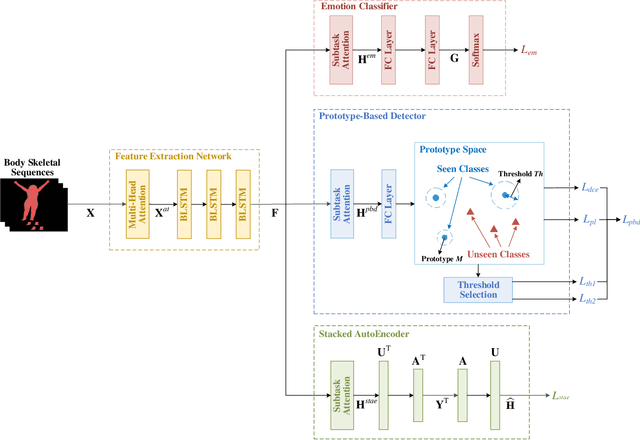
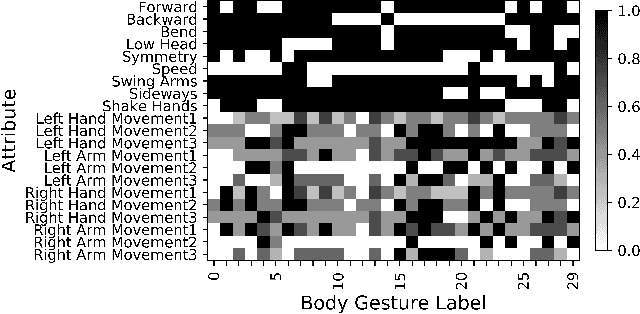
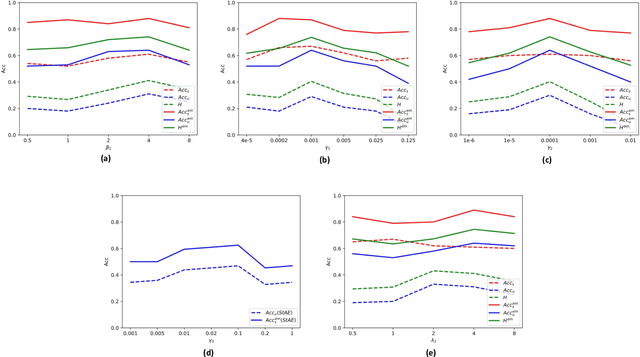
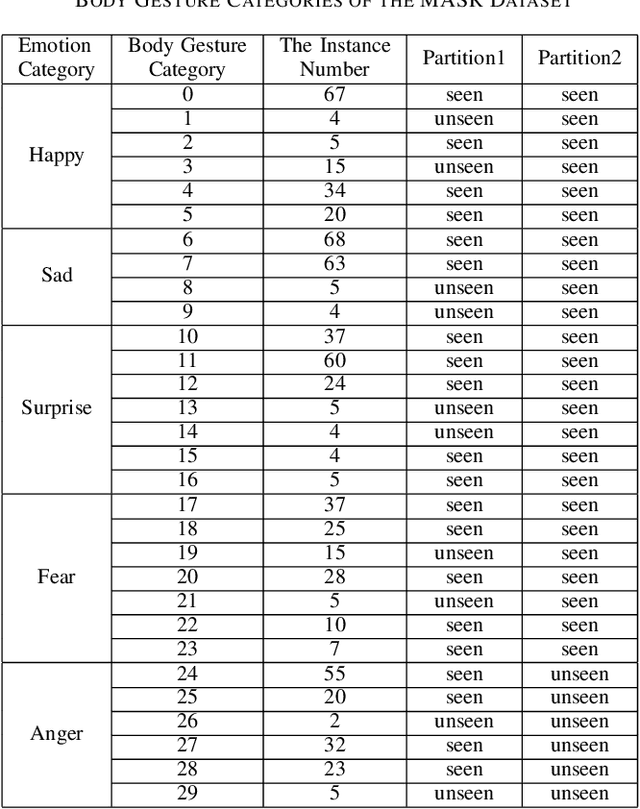
Abstract:Although automatic emotion recognition from facial expressions and speech has made remarkable progress, emotion recognition from body gestures has not been thoroughly explored. People often use a variety of body language to express emotions, and it is difficult to enumerate all emotional body gestures and collect enough samples for each category. Therefore, recognizing new emotional body gestures is critical for better understanding human emotions. However, the existing methods fail to accurately determine which emotional state a new body gesture belongs to. In order to solve this problem, we introduce a Generalized Zero-Shot Learning (GZSL) framework, which consists of three branches to infer the emotional state of the new body gestures with only their semantic descriptions. The first branch is a Prototype-Based Detector (PBD) which is used to determine whether an sample belongs to a seen body gesture category and obtain the prediction results of the samples from the seen categories. The second branch is a Stacked AutoEncoder (StAE) with manifold regularization, which utilizes semantic representations to predict samples from unseen categories. Note that both of the above branches are for body gesture recognition. We further add an emotion classifier with a softmax layer as the third branch in order to better learn the feature representations for this emotion classification task. The input features for these three branches are learned by a shared feature extraction network, i.e., a Bidirectional Long Short-Term Memory Networks (BLSTM) with a self-attention module. We treat these three branches as subtasks and use multi-task learning strategies for joint training. The performance of our framework on an emotion recognition dataset is significantly superior to the traditional method of emotion classification and state-of-the-art zero-shot learning methods.
A Prototype-Based Generalized Zero-Shot Learning Framework for Hand Gesture Recognition
Sep 29, 2020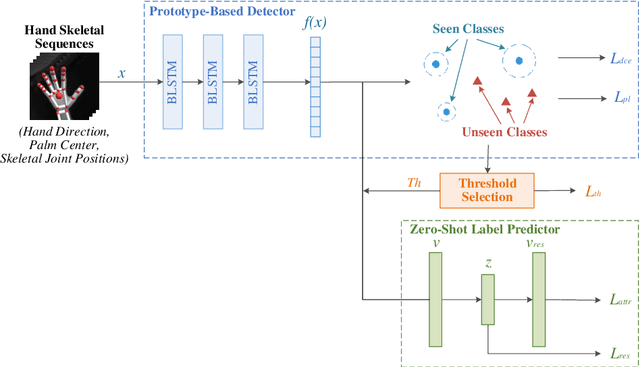
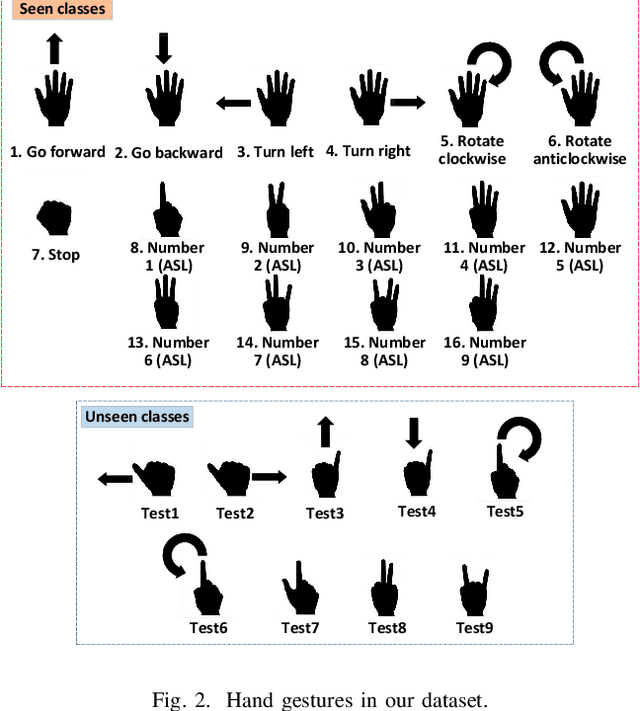
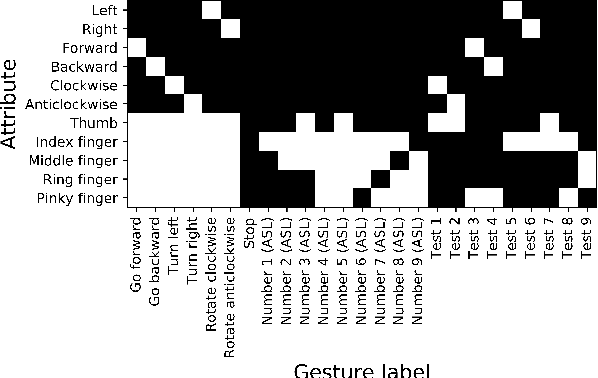
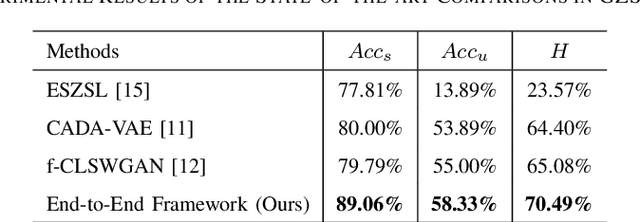
Abstract:Hand gesture recognition plays a significant role in human-computer interaction for understanding various human gestures and their intent. However, most prior works can only recognize gestures of limited labeled classes and fail to adapt to new categories. The task of Generalized Zero-Shot Learning (GZSL) for hand gesture recognition aims to address the above issue by leveraging semantic representations and detecting both seen and unseen class samples. In this paper, we propose an end-to-end prototype-based GZSL framework for hand gesture recognition which consists of two branches. The first branch is a prototype-based detector that learns gesture representations and determines whether an input sample belongs to a seen or unseen category. The second branch is a zero-shot label predictor which takes the features of unseen classes as input and outputs predictions through a learned mapping mechanism between the feature and the semantic space. We further establish a hand gesture dataset that specifically targets this GZSL task, and comprehensive experiments on this dataset demonstrate the effectiveness of our proposed approach on recognizing both seen and unseen gestures.
Real-Time Human-Robot Interaction for a Service Robot Based on 3D Human Activity Recognition and Human-mimicking Decision Mechanism
Jan 11, 2019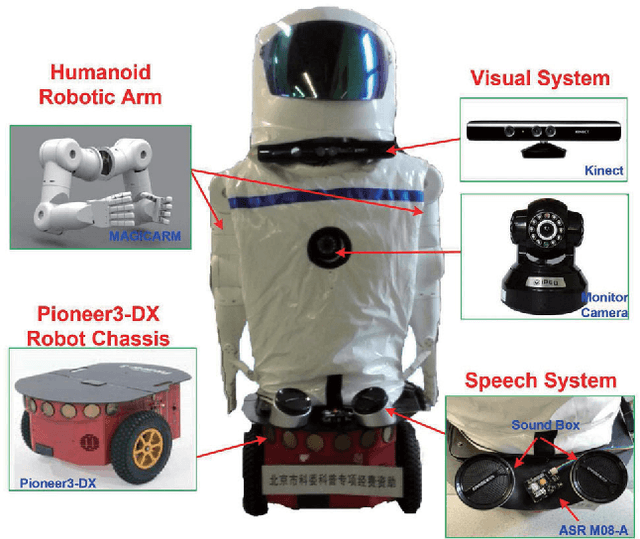
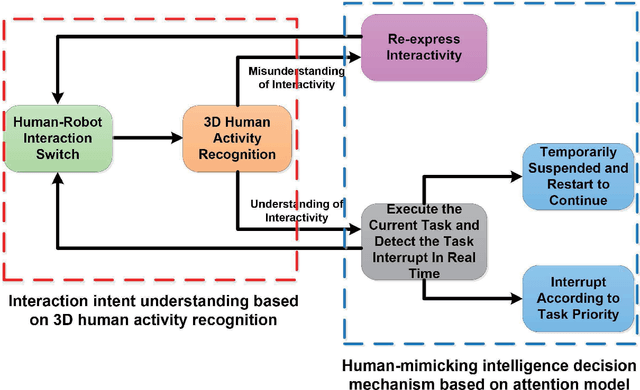
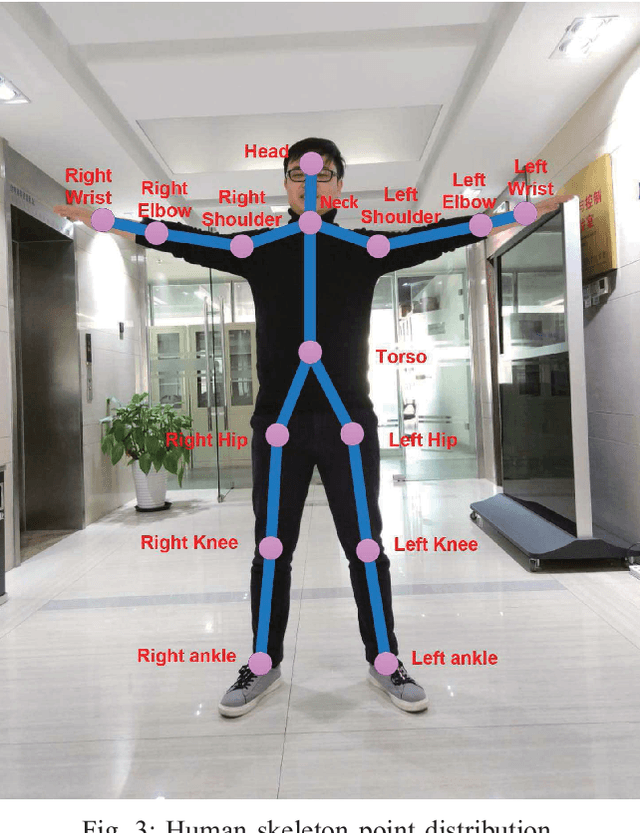
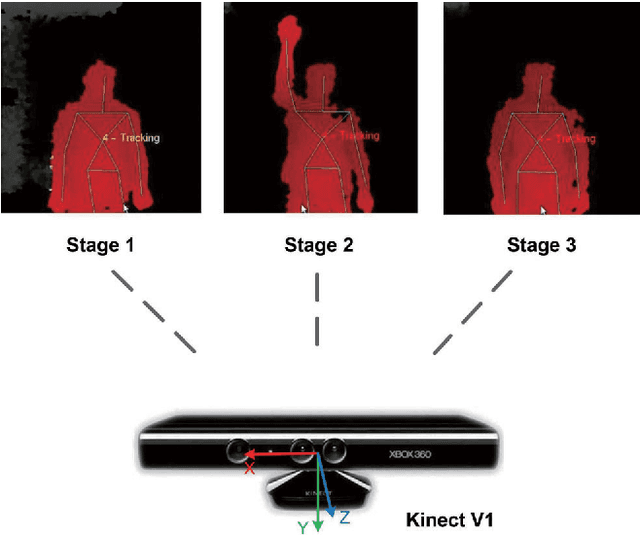
Abstract:This paper describes the development of a real-time Human-Robot Interaction (HRI) system for a service robot based on 3D human activity recognition and human-like decision mechanism. The Human-Robot Interactive (HRI) system, which allows one person to interact with a service robot using natural body language, collects sequences of 3D skeleton joints comprising rich human movement information about the user via Microsoft Kinect. This information is used to train a three-layer Long-Short-Term Memory (LSTM) network for human action recognition. The robot understands user intent based on an online LSTM network test, and responds to the user via movements of the robotic arm or chassis. Furthermore, the human-like decision mechanism is also fused into this process, which allows the robot to instinctively decide whether to interrupt the current task according to task priority. The framework of the overall system is established on the Robot Operating System (ROS) platform. The real-life activity interaction between our service robot and the user was conducted to demonstrate the effectiveness of developed HRI system.
 Add to Chrome
Add to Chrome Add to Firefox
Add to Firefox Add to Edge
Add to Edge